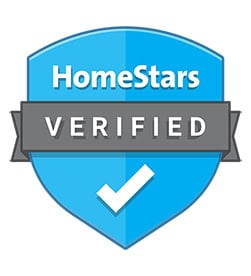Environment Canada is calling for sun and cloud with the chance of rain today. There is a good chance of showers for Saturday and Sunday. High’s will be in the mid 20’s, a little cooler on Sunday and night-time lows are forecasted to be around 10-15oC.
Growing Degree Day These are to the end of Thursday, June 3 (GDD 10oC / GDD 50oF). These numbers are only a guide for monitoring purposes. The temperatures at your production facility can vary significantly from the nearest weather station. Check out:https://climate.weather.gc.ca/?url=http%3A%2F%2Fclimate.weather.gc.ca
| Peterborough: 226 / 407 | Hamilton RBG: 258 / 464 | |
| Vineland Stn: 232 / 418 | London CS: 272 / 490 | Windsor: 320 / 576 |
Growers’ Research Auction, July 15
Landscape Ontario Milton office (7856 Fifth Line South, below Steele’s Ave).
Plastic pot, tag and tray recycling!
Bring your plastic pots, tags and trays to Landscape Ontario office in Milton (5th Line South of Steeles) for recycling, from June 28 to July 5. For more information, contact Lorraine Ivanoff at 1-800-265-5656, ext. 236, or email lorraine@landscapeontario.com.
Weed ID Online: http://www.weedinfo.ca/home.php
PLEASE NOTE: Pesticide Recommendations are meant for Exception Uses (e.g. agriculture) under the Cosmetic Pesticide Ban unless the active ingredient is listed under Class 11 pesticides in Ontario Regulation 63/09, effective April 22, 2009. There is exception from the ban for the use of pesticides to maintain the health of TREES, if certain conditions are met. For more info, you can go to the Ministry of the Environment’s website athttp://www.ontario.ca/pesticides
VARIOUS ORNAMENTALS:
Low temperature injury is still quite noticeable on several types of deciduous woody and evergreen shrubs and trees (e.g. Fraxinus, Quercus, Acer etc.). Look for brownish black leaf margins and lesions, and distorted leaves. The next flush of growth should mask this symptomatic foliage.
Leafhoppers have arrived! Monitor for leafhoppers (such as potato leafhopper) on nursery crops such as Caragana, and Acer, especially after forage crops have been cut on neighbouring farms. Leafhoppers adults are winged, are very mobile, tiny, pale yellow-green jumping insects that are easily disturbed when you approach infested foliage. It almost looks as though they are being flicked off of the foliage. Adults blow in from the south and will feed and lay their eggs on newly expanding leaf tissue. Leafhopper nymphs are tiny, flightless, yellow-green insects that move sideways, very rapidly across the leaf. Leafhoppers (and aphids) suck plant sap from expanding foliage and cause foliage to wilt, become off-coloured and eventually curl, stunted with brown-black margins (“hopper burn”). Leafhopper injury also appears as bronzing or stippling on more mature leaves. Monitor populations and treat with insecticides before damage becomes economically threatening. Leafhoppers are also attracted to yellow sticky cards, for monitoring. Registered insecticides include Tristar and Sevin XLR.
Monitor for black vine weevil larvae and pupae in the FIELD and LANDSCAPE for Rhododendron, Taxus, Thuja and Euonymus. Black vine weevil adults will be emerging soon in the field. It’s too late for applications of nematodes in the field/landscape. Strawberry root weevil can also be a problem in field production of evergreens, adults will be emerging in the next week or so. Insecticides for adult weevils in the nursery include Pounce, Sevin and Thiodan.
Black vine weevil adults are active in container production. Where black vine weevil larvae are a problem in CONTAINER PRODUCTION (e.g. perennials, evergreens), insecticide applications can be made to target the adult stage. Nematode applications for larvae will have to wait for late summer/early autumn.
White grubs are pupating and species of May/June beetle adults have already emerged. A preventative applications of Intercept (imidacloprid) is registered for white grubs in nursery production. In the field, the application period is June to July (to coincide with egg-laying). To help qualify for the Japanese beetle certification program, an application of Intercept on container stock should be some time between mid-June to July. The cut-off period for Intercept applications to comply with the JB Certification program this year may be as early as July 31st. Nematode applications for white grubs (e.g. European chafer) are not effective at this time. Try timing nematode applications for late August/early September to catch early instar larvae.
DECIDUOUS WOODY AND HERBACEOUS PERENNIALS:
Dutch Trig is registered for Dutch Elm Disease on Ulmus americana species in Canada. This is a new registration that contains a biological organism that induces an immune response in the tree, to help it fight off DED infections. Arbotect-20-S (thiabendazole) is the alternative, a registered injectable fungicide treatment. Injections should be made on sunny days during leaf emergence to maximize uptake.
The first generation of Euonymus scale crawlers will be hatching in the field and landscape. Euonymus scale look like tiny white (males) and brown (females) flecks along twigs and the undersides of leaves. Look for bright, orange crawlers around populations of adults and on the undersides of leaves and twigs. Where insecticide applications are warranted, multiple applications may be required to get good knockdown since crawler emergence is staggered over a few weeks. Try insecticidal soap and the summer rate of horticultural oil.
Oystershell scale eggs are hatching in southwestern Ontario. The nymphs will be hatching and looking for new feeding sites over the next few weeks. Adult scales look like miniature sea shells, often twisted to one side and there can be several generations of dead adults caked onto stems and branches. They are small scale insects, about 3mm long when mature. They feed on the twigs ofFraxinus, Acer, Quercus, Malus, Syringa and Tilia. Crawlers begin to hatch when the Philadelphusbegins to bloom and the Syringa patula ‘Miss Kim’ are in full bloom. Treat crawlers at PEAK egg hatch, about 7-10 days after crawlers start to hatch. Repeat applications 2-3 times since crawler hatch is staggered. Try Landscape Oil and insecticidal soap.
Woolly beech aphid can be found feeding on European beech (Fagus sylvatica) leaves. The aphids overwinter as eggs, hatch at bud bread and give birth to live young as leaves have expanded. They secrete a white, waxy substance that covers their body and makes it appear “woolly”. Insecticidal soap or a strong stream of water can help reduce numbers of woolly aphids before they coat the undersides of the leaves. Infestation does not usually reduce host vigour, but honeydew production attracts other insects (ants, bees, wasps) and sooty mould.
We saw elm sawfly larvae making leafminer tunnels on foliage of Siberian elm last week. Each year, elm leafminer causes significant injury to elm, especially non-native species. Monitor historically-damaged trees and treat with systemic insecticides when leaves are emerging, where appropriate.
Elm flea weevil adults have laid their eggs, you can see the brown scars on the undersides of the midveins. We saw the beginnings of larval tunnels, making their way from the midvein to the leaf margin last week on Siberian elm (Ulmus pumila). Larval feeding inside leaves causes significant leaf blotching along leaf margins. Early adult feeding causes small, discrete holes in the leaves (visible now). If you are seeing this pest, please let me know.
Viburnum leaf beetle larvae are nearing the end of their feeding period and about 6 mm long in the landscape. The larvae are the most vulnerable to chemical control only during the first 7-10 days after hatch. Larvae feed on the interveinal tissue from the undersides of the leaves. It is too late for insecticides.
Emerald ash borer adults will be starting to emerge soon. TreeAzin (azadirachtin, neem) has an emergency use registration (until August 31) for emerald ash borer on ash. This is an injectable insecticide that is delivered though BioForest’s Ecoject system, to inject insecticides to help protect ash trees from this borer. For more information contact BioForest (http://www.bioforest.ca/).
The regulated areas for Emerald Ash Borer have been updated. Check out:http://www.inspection.gc.ca/english/plaveg/pestrava/agrpla/survenqe.shtml
Honeylocust plant bugs can be found feeding on new foliage (nymphs are 3-4 mm long, green, fast crawling plant bugs). These plant bugs are really causing a lot of injury on mature honeylocusts inWellington County this year. This was a significant pest in the last couple of years, treat where there is a history of damage and a high population, where appropriate.
Peach tree borer (Synanthedon exitosa) adults will be flying in the next few weeks. Look for cankered regions and chewed bark/wood in the lower stems of Prunus x cistena (and other Prunus spp.) as a sign of larval damage. The clearwing moths that emerge resemble wasps. Adults are very much attracted to sticky wing traps that are baited with peach tree borer pheromones. Place pheromone traps out in early-mid June (approximately 390 GDD Base 10oC, ‘Red Prince’ Weigela in full bloom) and monitor for peak flight of adults. You can expect peak egg hatch around 10-14 days later, if you are thinking of treating newly-hatched larvae. The same ‘clearwing moth’ pheromones and traps can be used to monitor for Viburnum borer. Viburnum borer chews the stem (at and below the soil line) and causes significant injury to container grown Viburnum. Viburnum borer will be starting to emerge in container production at this time. To purchase traps, try ordering from IPM suppliers such aswww.greatlakesipm.com and www.naturalinsectcontrol.com.
Fall Cankerworm larvae are feeding on deciduous tree leaves. Look for small, green or dark grey “inchworms” feeding on the undersides and edges of leaves or dangling on long threads from the canopy. Spring cankerworm have 2 pairs of prolegs whereas fall cankerworms have 3 pairs of prolegs (fleshy legs near end of abdomen, behind the “true” legs). They will strip leaves similar to Gypsy moth larvae (and in fact, the two can often be found feeding on the same tree). Cankerworm larvae are susceptible to Bacillus thuringienesis (Dipel, Foray), spinosad (Success) insecticides, but you will need to make B.t. applications as early in larval development as possible.
Gypsy moth larvae are small, dark, very hairy caterpillars with a dark head. The pairs of red and blue dots on their back is just starting to become noticeable. We often find Gypsy moth larvae feeding onQuercus, Corylus, Tilia etc. Some control can be achieved using Dipel (Bacillus thuringienesis) in the first few weeks after egg hatch and is effective until larvae are about 2.5 cm long and their head capsule turns yellow. Success (spinosad) insecticide is a low toxicity choice that is effective during all instars. Pounce (permethrin) also has some good efficacy against the larval stage and is a low toxicity choice. Some keen homeowners can install a burlap skirt at the base of the tree to create a shady, protected area for larvae to hide during the day. Homeowners will need to inspect burlap skirts and underlying bark crevices daily (1-3 pm is best) and remove/destroy larvae. Sticky bands around trunks will help intercept adult females (in early summer) from laying eggs above and will attract adult males to the sticky surface.
Two-spotted spider mites (TSSM) have shown up on greenhouse grown ornamentals (woody and herbaceous). TSSM will be showing up on field grown crops soon. Use your hand lens to see tiny, clear bodied mites with dark regions (may be faint black) on their backs. These mites are small but the damage is significant so catch them early. Miticides registered for this mite in the greenhouse include: DynoMite, Vendex, Shuttle, Floramite, Avid and Kelthane. Apollo is registered in outdoor nursery crops to knock down the egg stage and newly hatched nymphs. In the greenhouse, biocontrol agents should be brought in to coincide with the first sign of TSSM. Phytoseiulus persimilis is a predatory mite that feeds on TSSM when temperatures are below 26oC and it is a good choice when TSSM populations are low-moderate. Amblyseius californicus is a predatory mite that can be brought in ahead of TSSM appearance (because it can find other sources of food).
EVERGREENS & CONIFERS:
Where new foliage is emerging on conifers, monitor for needlecast and blight diseases in the area. Diplodia tip blight on 2 and 3 needled pines and Rhizosphaera needlecast and Stigmina on blue Colorado spruce are our most common needlecast diseases in Ontario. Diplodia tip blight appears as brown, stunted needles (look for tiny, black dots erupting through the surface) at the tips of branches. Rhizosphaera appears as brown-purplish needles from the growth that is 2-3 years old, symptomatic needles begin to drop in late spring. Stigmina appears on green and chlorotic needles, but doesn’t always lead to needle drop. To confirm it is Rhizosphaera, look at the undersides of the needles. Those little white dots (stomata) will turn black and the black spots will protrude during sporulation. New, soft growth is especially susceptible to foliar diseases, but infection may also take place later in the season (we don’t know). Where there is a history of damage, treat with registered fungicides (copper oxychloride, Daconil) as buds start to open and protect new foliage. Apply fungicides prior to precipitation events (spore dispersal). Unfortunately, most of these blights and needlecasts can be found sporulating for much of the year.
Juniper scale crawlers have hatched. Look for tiny, white flecks on the needles of Juniperus and Thuja. Adults scales look like tiny, white, twisted sea shells. Crawlers are yellow and can be found amongst dead, adult scales and on the foliage of infested plants. Where insecticide applications are warranted, multiple applications may be required to get good knockdown since crawler emergence is staggered over a few weeks. Try insecticidal soap and the summer rate of horticultural oil.
Pine false webworm larvae are feeding on the foliage of white pine. Larvae snip off foliage and make webby nests near the trunk. The larvae clip off more needles and pull them into the webby nest where they feed on them. The larvae feed mainly on older growth and will only eat the current year’s growth when all else has been consumed. The new nests can be dislodged with a strong stream of water.
European pine sawfly larvae are feeding. Look for green-tan larvae with dark heads feeding on needles. They can be easily destroyed or manually removed where they are still small and feeding in groups. A low toxic pesticide choice is Success. Closely examine pine trees and shrubs such asPinus sylvestris, Pinus mugo, Pinus nigra.
Monitor for nymphs and adults of spruce spider mite on conifers with a history of mite damage. SSM nymphs are tan coloured with dark backs, and move at a moderate pace. Adults have darker black backs. Miticides registered for this pest include Kanemite, Floramite and Vendex.
The second generation of Balsam twig aphids can be found feeding on the new shoots of fir, white spruce, Colorado spruce and juniper, they are very difficult to manage with insecticide applications. Look for blue-green aphids and woolly masses of wax feeding on twisted/distorted new needles. We have had a few reports of heavy populations in the landscape.
Taxus or Fletcher Scale (Parthenolecanium fletcheri) nymphs are maturing and starting to lay their eggs on foliage of Thuja and Taxus. Look for honeydew and small, brown bumps on foliage, pick off scale and examine the undersides. If the tissue underneath appear “fleshy”, they are still maturing. If the undersides are packed with tiny, white grains, they have laid their eggs. Applications of insecticides are most effective against crawlers (once those eggs have hatched) in a few weeks. Repeated applications (2-3 times) will be necessary since egg hatch is staggered.
Striped Pine scale was quite noticeable on Scots pine last year in the landscape and nursery. Look for reddish brownish “bumps” along the undersides of twigs and copius amounts of honeydew and black sooty mould. It is advised to flag infested trees and treat them in early July to target the newly hatched crawlers. You might also prune out and destroy severely infested twigs right now to prevent the next generation of scale
Cedar leaf miner adults are emerging. I’ve had a report of bad CLM east of Toronto this year and seen it in several spots in SW Ontario. Tear along the margin of green and brown tissue and check for the presence of hollowed out tissue and tiny, yellow/green larvae or pupae. Leaf mines could also be empty, with a tiny round emergence hole since many species (there are a few species) have already emerged. Applications of insecticides and pruning infested tips should be targeted for early-mid August.
– See more at: https://lawnsavers.com/nursery-and-landscape-report-2010/nursery-and-landscape-report-for-june-4-2010.html#sthash.iPrpcz1w.dpuf






